I landed in Kathmandu with a head full of chaos and a heart craving stillness. Life back home in Portland had been loud—emails, deadlines, honking cars, and the endless scrolling that numbed more than it entertained. I hadn’t come to Nepal for Everest’s fame or Annapurna’s popularity. I wanted something raw, something quieter, somewhere I wouldn’t hear English at every tea house. That’s how I found the Manaslu Circuit trek that doesn’t advertise itself loudly but calls to the ones ready to listen. I didn’t know it then, but this trail would strip me down and rebuild me in the most unexpected ways.
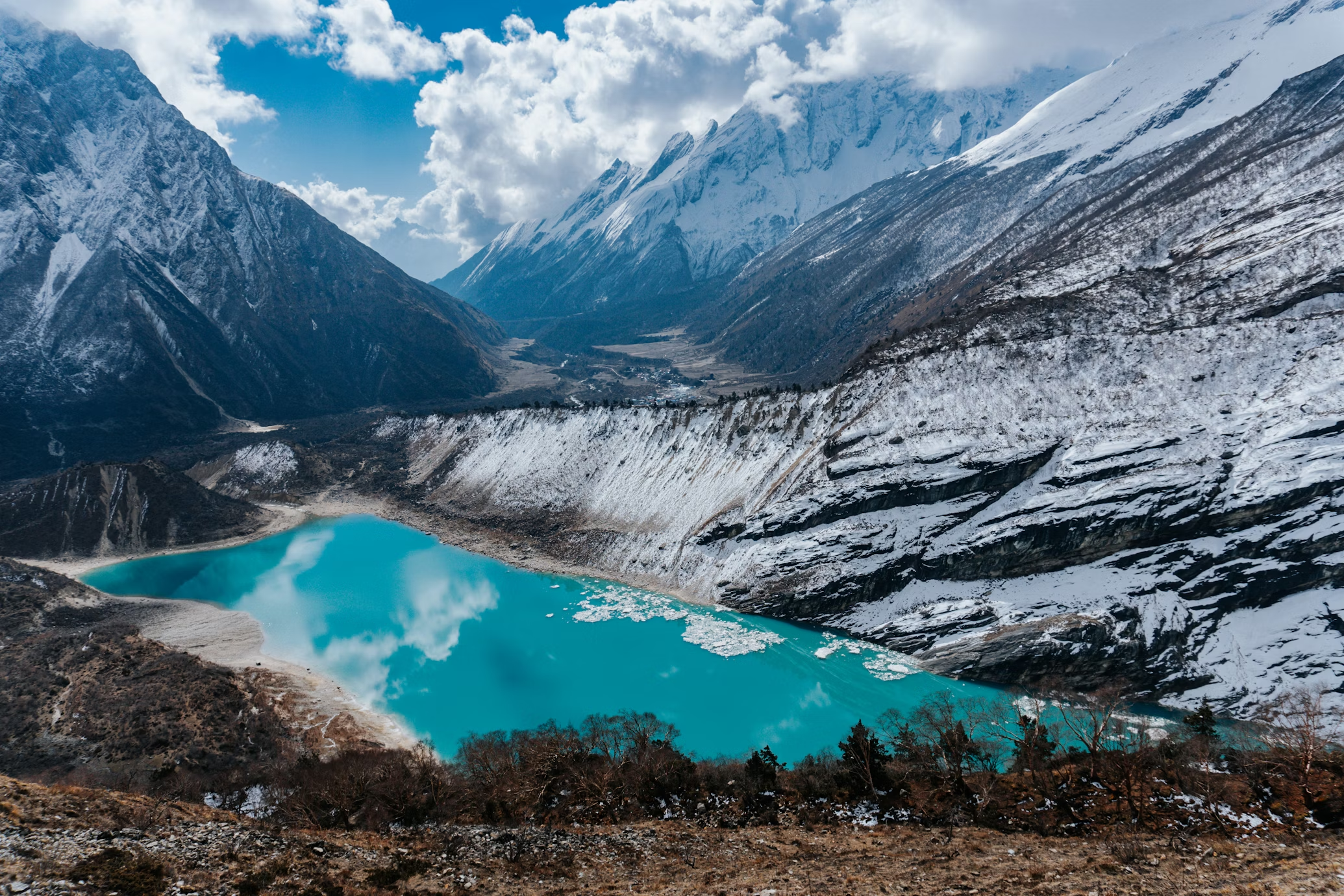
The first thing I noticed as we drove out of Kathmandu toward Machha Khola was how quickly the modern world slipped away. The roads turned to dust, the Wi-Fi bars disappeared, and my phone finally gave up trying to keep me connected. It was liberating and terrifying at once—like I was shedding a layer I didn’t realize I’d been wearing for years. Our jeep bumped along narrow cliffside paths, the driver unfazed while I clutched the seat with white knuckles, pretending not to panic. But somewhere in the jolts and dust clouds, I started smiling for no reason. This wasn’t just travel anymore. It already felt like transformation.
When we began walking, the world got quiet in the best way. Not silent—there were rivers roaring beneath suspension bridges, roosters greeting the morning, children laughing behind stone walls—but quiet like my thoughts had room to breathe again. The trail twisted through tiny villages where smiles were currency and the Dhal Bhat never ran out. My legs ached early, unaccustomed to days of constant movement, but it felt good—honest pain. The air smelled like earth and firewood, and with every step, I felt further from the version of myself that had boarded that plane in the U.S. This was what I had come for: the slow unraveling, the rediscovery, the walk back to something simple and true.
More On Manslu Circuit Trekking
Before I even laced up my boots, I did my homework on Manaslu—and I’m glad I did. The Manaslu Circuit is nestled in the Gorkha District of north-central Nepal, hugging the border with Tibet. The crown jewel here is Mt. Manaslu itself, the eighth-highest mountain in the world at 8,163 meters (26,781 ft), but you don’t need to be a mountaineer to experience its magic. The trek typically starts around Machha Khola (870m) and winds its way up to the breathtaking Larkya La Pass at 5,160 meters (16,929 ft), before descending toward Dharapani, where it connects with the Annapurna Circuit. It’s about 14–18 days on foot depending on your pace, with roads only reaching some villages on the lower section—after that, your legs are your only ride.
The path is remote, wild, and staggeringly beautiful, passing through ancient Tibetan-style villages, cascading waterfalls, and dense rhododendron forests. Compared to the busier Everest and Annapurna trails, this one feels untouched, like you’re walking into a part of Nepal still preserved in time.
The Climate
The climate along the Manaslu Circuit shifts dramatically with altitude and season. I trekked in October, the sweet spot right after the monsoon rains and before winter snow blocks the high pass. Days were warm enough for a light layer at lower elevations—maybe 15–20°C (59–68°F)—but nights got cold fast as we climbed, dropping below freezing above 3,500 meters. The Larkya La Pass was a different world entirely: wind-whipped, icy, and thin-aired, but stunning beyond belief.
Spring (March–May) and autumn (September–November) are the best times to go—clear skies, stable weather, and wildflowers or post-monsoon greenery. It’s a restricted region, which means you’ll need a special permit and a registered guide or porter—not just for rules, but honestly, for safety and local knowledge too. There’s barely any cell service, no ATMs past Arughat, and creature comforts are basic at best. But in return, you get a raw, wild, and humbling experience that no luxury can buy.
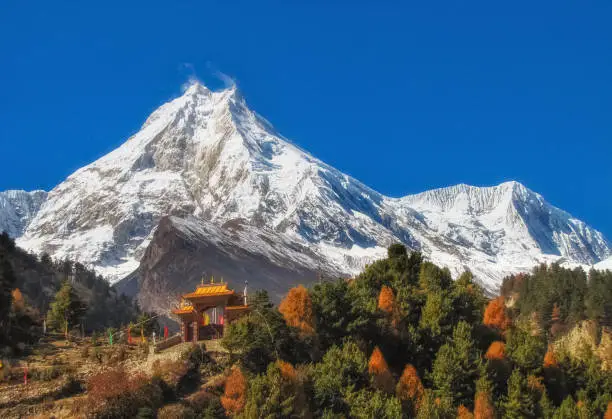
Day – to -Day Experience
Day 1: Machha Khola – First Steps Into the Wild
We started walking from Machha Khola, a small riverside village that buzzed softly with morning life—roosters, crackling stoves, and children chasing chickens barefoot. My backpack felt heavier than it should have, even though I’d packed light. Maybe it was nerves or the strange mental weight of leaving the world behind. The trail hugged the Budi Gandaki River, sometimes dipping into jungly shade, sometimes crossing over sketchy suspension bridges that made my stomach flutter. There was one moment—just before reaching Tatopani—when we passed a steep cliff and heard monkeys screeching above us, invisible but loud. That’s when it hit me: this wasn’t going to be a “walk in the woods.” This was the beginning of something ancient, untamed, and deeply alive.
Lunch was a plate of simple but perfectly spicy fried noodles, cooked over a wood fire by a woman who didn’t speak a word of English but smiled more sincerely than most people I know back home. We reached Khorlabesi by late afternoon, a cozy little stop with a teahouse that smelled of damp earth and ginger tea. My legs already ached, but I couldn’t stop grinning. Everything felt stripped down and elemental—fire, stone, sweat, and sky. That night, wrapped in a thick blanket and listening to the river roar outside my window, I wrote in my journal: “It’s loud in the city, but here, the silence has a sound of its own.” If you’re chasing clarity, I thought, start here.
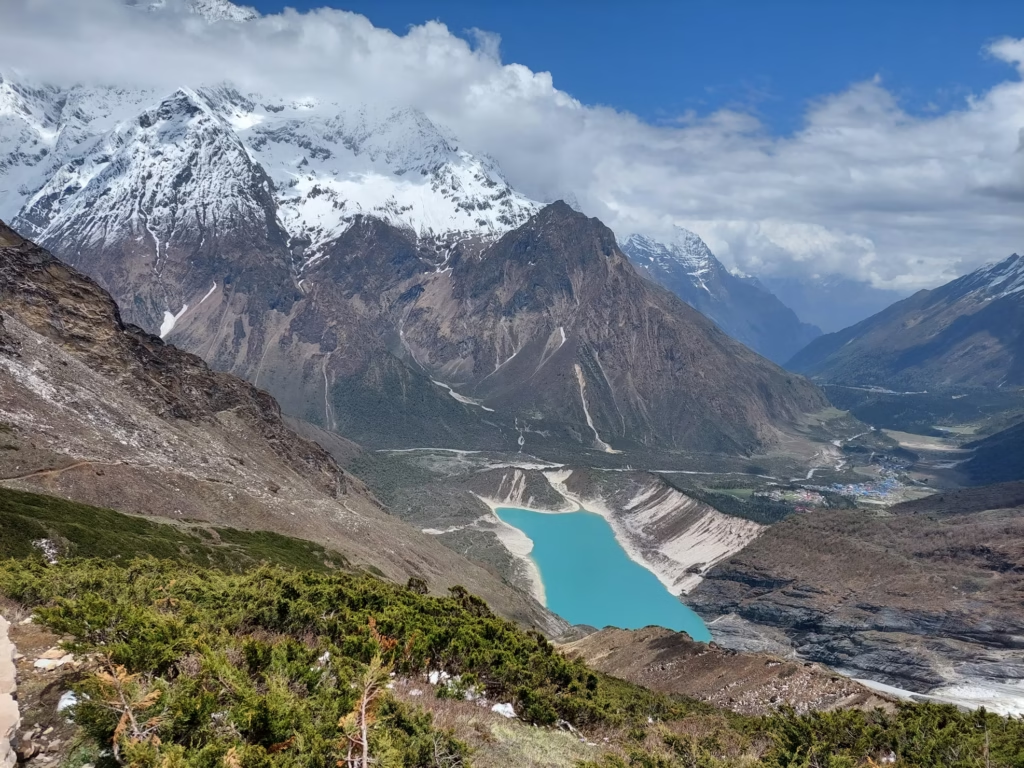
Day 2: Khorlabesi to Jagat – Of Hot Springs and Earthquakes
Day two tested my knees and my heart in equal measure. The trail climbed and dipped like it couldn’t make up its mind, with stone staircases that seemed designed by someone who hated legs. We passed a natural hot spring near Tatopani, and though we didn’t stop long, the steam rising from the rocks was like a whispered invitation. The river kept us company the whole way, surging below as we crossed bridge after bridge—some sturdy, some terrifying, all unforgettable. At one point, we rounded a bend and the view opened to this colossal gorge, sheer cliffs rising straight up, water raging below. I just stood there for a minute, dizzy from the beauty and the drop.
We reached Jagat in the late afternoon, a village rebuilt after the 2015 earthquake. You can still see scars—cracks in old stone walls, prayer flags tangled in the ruins—but there’s resilience here, stitched into every building and every smile. I met a local shopkeeper who told me, with a mix of pride and pain, how they carried timber and bricks up the trail by hand to rebuild. That night, we ate dal bhat with mustard greens and spicy pickle, and it was, no exaggeration, the most satisfying meal I’d had in months. Maybe it was the hunger, maybe it was the setting, but I swear that food healed something. If you’re trekking this route, don’t just look at the mountains—talk to the people. Their stories are as towering as any peak.
Day 3: Jagat to Deng – The Forest, the Fog, and the First Big Climb
We left Jagat early, just as the sky was starting to turn pink behind the hills. The air felt cooler, and the trail became more peaceful, with fewer houses and more trees. Today was the first day I felt like I was truly entering the mountains. The trail climbed slowly through thick forest, crossing stone steps and small streams. There was a stretch where clouds rolled in low, and for a while we walked in soft fog, with nothing but our footsteps and the distant sound of the river. It felt like we were walking through a dream—quiet, slow, and full of mystery.
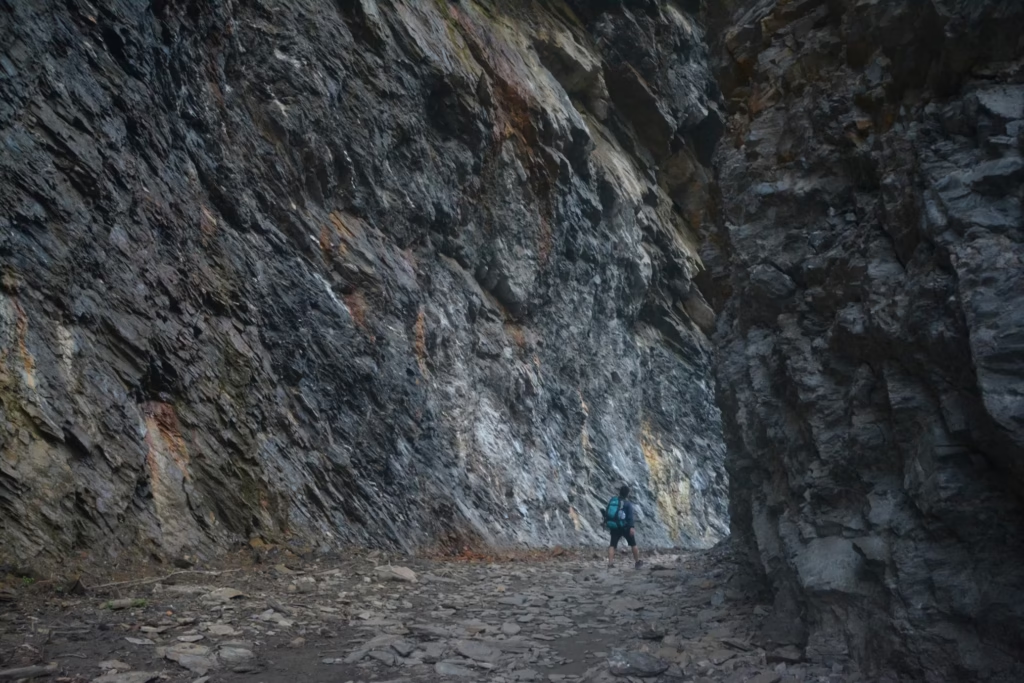
We passed small villages like Sirdibas and Philim, where kids waved from behind stone fences and yaks stood chewing in the middle of the trail. In Ekle Bhatti, we stopped for tea and a short break. The hot ginger tea warmed my hands and soul. After that, the trail got steeper and narrower. There were long, winding paths carved into cliffs, and I had to stay focused with every step. When we reached Deng in the evening, I was exhausted but proud. My legs were sore, but my heart felt light. I slept early that night, under thick blankets, listening to the wind blow through the forest outside.
Day 4: Deng to Namrung – Closer to the Snow
Today started with the sound of roosters and cowbells, and the smell of smoke from early morning fires. We packed up and started walking before the sun reached the valley floor. The trail felt more remote now, more wild. The villages were smaller, the trees taller, and the air colder. We crossed narrow wooden bridges and passed waterfalls that seemed to fall from the sky itself. At one point, we hiked beside a steep drop where the river thundered far below—scary but beautiful. I moved slowly, not because I was tired, but because I didn’t want to miss a single detail.
We stopped for lunch at a small teahouse where the only thing on the menu was dal bhat. I didn’t mind. It was hot, fresh, and filling—and the chili pickle on the side was fire in the best way. After lunch, the climb to Namrung was tough. Long, uphill stretches that made my legs burn and my breath short. But the views were changing. The forest opened up now and then to reveal snow-dusted peaks in the distance. When we reached Namrung, I looked back at how far we’d come and couldn’t believe it. Mountains teach you patience. They remind you that every step counts, even the small ones.
Day 5: Namrung to Lho – First Glimpse of the Giants
We left Namrung with frost still on the rooftops and our breath fogging the cold morning air. Right away, I noticed a change—the trees were thinner, the mountains closer, and the whole world felt taller. The trail climbed slowly but steadily through pine and fir forest, and every now and then we’d pass a mani wall or a small stone stupa with prayer flags fluttering in the wind. It felt peaceful, like walking through a living temple. My guide pointed out Mt. Himalchuli peeking through the clouds—it was the first time on the trek I saw a real Himalayan giant up close. I just stood there for a while, smiling like a kid.
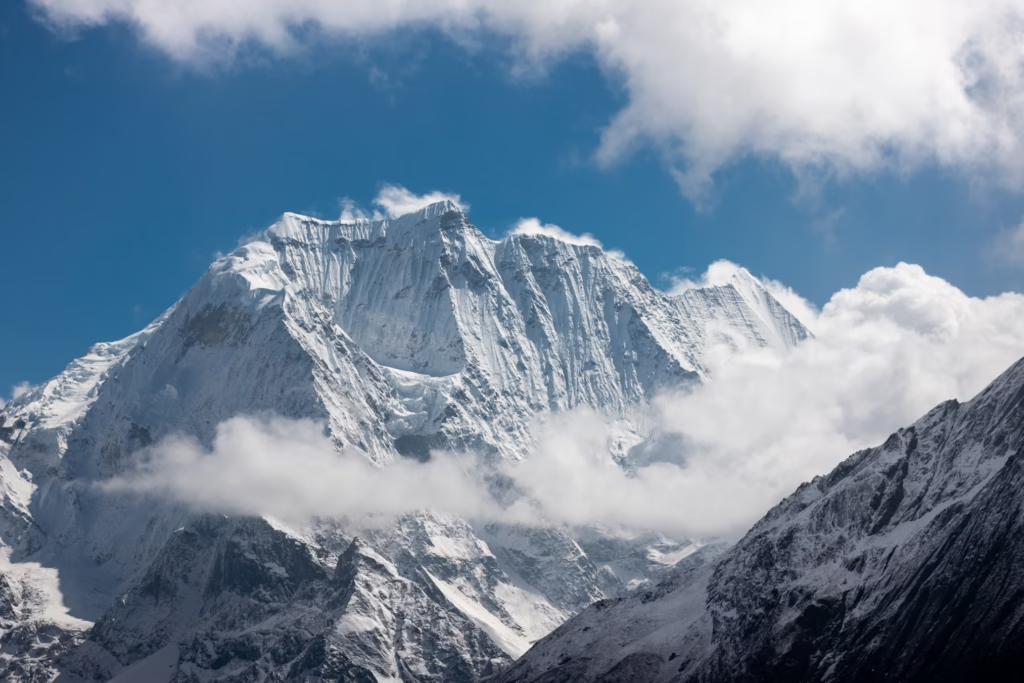
The villages we passed today were smaller and quieter. People spoke Tibetan more than Nepali, and the houses were made of stone, low to the ground with wood piles stacked outside. When we reached Lho, I was blown away. The village sits in the shadow of Manaslu, and for the first time, I saw the full snow-covered peak rising like a god above the rooftops. We visited a monastery just above the village before dinner, and the sound of monks chanting echoed through the cold air. That night, as I sat outside with a cup of salty butter tea (not my favorite, but worth trying), I stared at Manaslu glowing in the moonlight. If there’s one moment I’ll carry forever, it’s this one.
Day 6: Lho to Samagaun – Where the Air Gets Thin
Woke up early and cold, but excited. Today we were heading to Samagaun, one of the most beautiful villages on the trek. The trail was wide and open now, with snowy peaks all around and the valley stretching far below. We passed through Shyala, a stunning little village surrounded by mountains on all sides. It felt like a painting—seriously, I’ve never seen anything like it. The air was thinner now; I started to feel short of breath even on gentle climbs. My guide reminded me to go slow, drink water, and just listen to my body. I took breaks more often, not because I was weak, but because I didn’t want to rush past the magic.
We reached Samagaun in the afternoon, and wow—what a place. Stone houses, yaks grazing in the fields, and prayer flags in every direction. The village sits at around 3,500 meters (11,500 ft), and you can feel it. Everything slows down here, and that’s a good thing. I spent the evening walking around, watching the golden light hit the snowy peaks, and talking to a local woman who told me how winters here can last six months. Dinner was the best Tibetan bread I’ve ever had, served with honey and a hot vegetable soup. If I have one message for future trekkers, it’s this: let the mountains set your pace. Don’t chase time—chase moments.
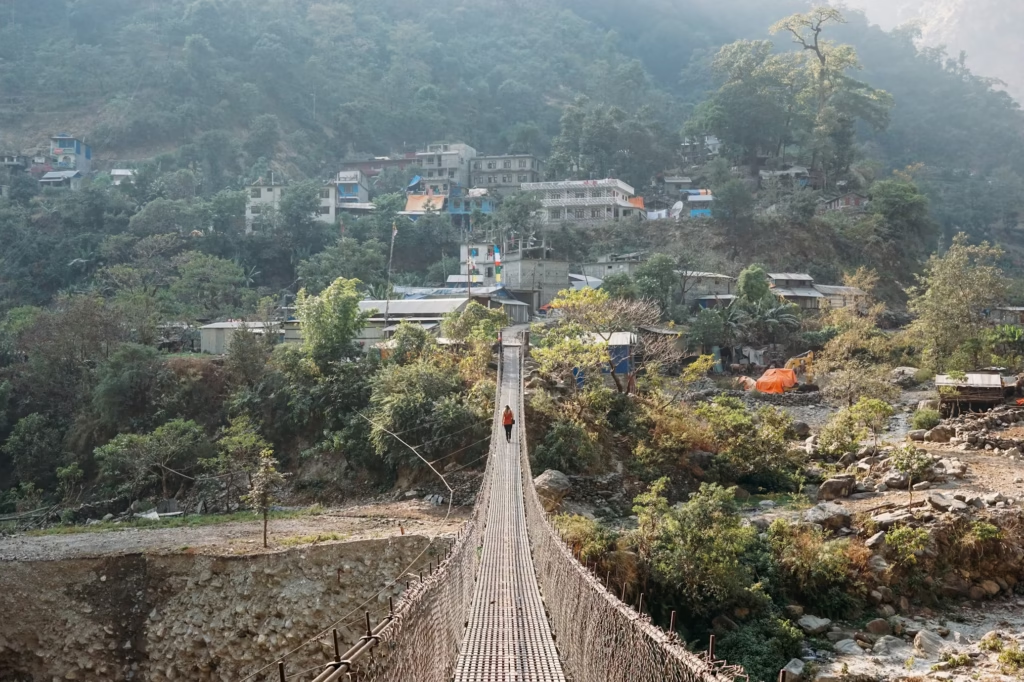
Day 7: Acclimatization Day in Samagaun – Breathing at the Roof of the World
Today was a rest day, but “rest” in the mountains doesn’t mean sitting still—it means walking higher and sleeping lower to let your body adjust. After breakfast, we hiked up to Birendra Lake, a glacial lake that sits under the face of Manaslu. The water was a bright, unreal shade of blue, like someone had poured sky into the earth. The wind was sharp and cold, but I didn’t care. I stood there for a long time, just watching the clouds move across the mountain. Every breath was a little harder, every step a little slower, but everything felt more alive. More honest.
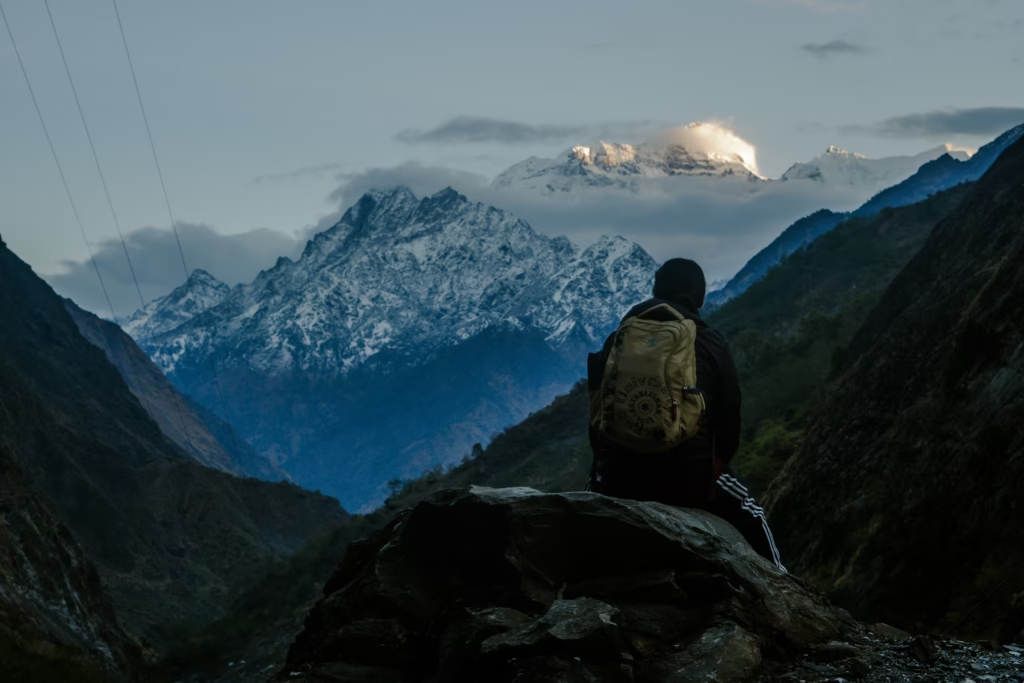
In the afternoon, we returned to the village and rested. Some trekkers went higher to Manaslu Base Camp, but I decided not to push it. Acclimatization is about listening, not proving. I spent the evening wrapped in a blanket, watching the mountains change color as the sun set. I thought about how far I’d come—not just in kilometers, but in mindset. Up here, Wi-Fi doesn’t work, your clothes are always a little dusty, and nothing is easy. But that’s the point. The simplicity is the beauty. You learn to appreciate things like warm tea, dry socks, and the sound of wind between peaks. And that’s a gift.
Day 8: Samagaun to Samdo – One Step Closer to the Sky
We left Samagaun with heavy packs and light hearts. The path today wasn’t too steep, but it felt harder because of the altitude. My breath came shorter, and I had to stop often—not because I was weak, but because I wanted to look around. The world here feels endless. Mountains rise in every direction like frozen waves, and the valley below is wide and silent, broken only by the distant sound of yak bells. We passed small mani walls and simple stone shelters used by herders, and I started to notice how life here is built to survive, not impress. It’s raw, but deeply beautiful.
When we reached Samdo, it felt like we were almost in another world. The village is made of stone, shaped by wind and time, sitting just 15 kilometers from the Tibetan border. Snow clouds rolled in as we arrived, and everything turned silver and quiet. That night, as I watched the stars blink awake one by one, I thought about Larkya La Pass, just ahead. I’d heard stories—how hard it is, how high it is, how beautiful it is. And now I was almost there. Tomorrow, we climb higher. But tonight, I sleep with wonder in my heart and snow in the air.
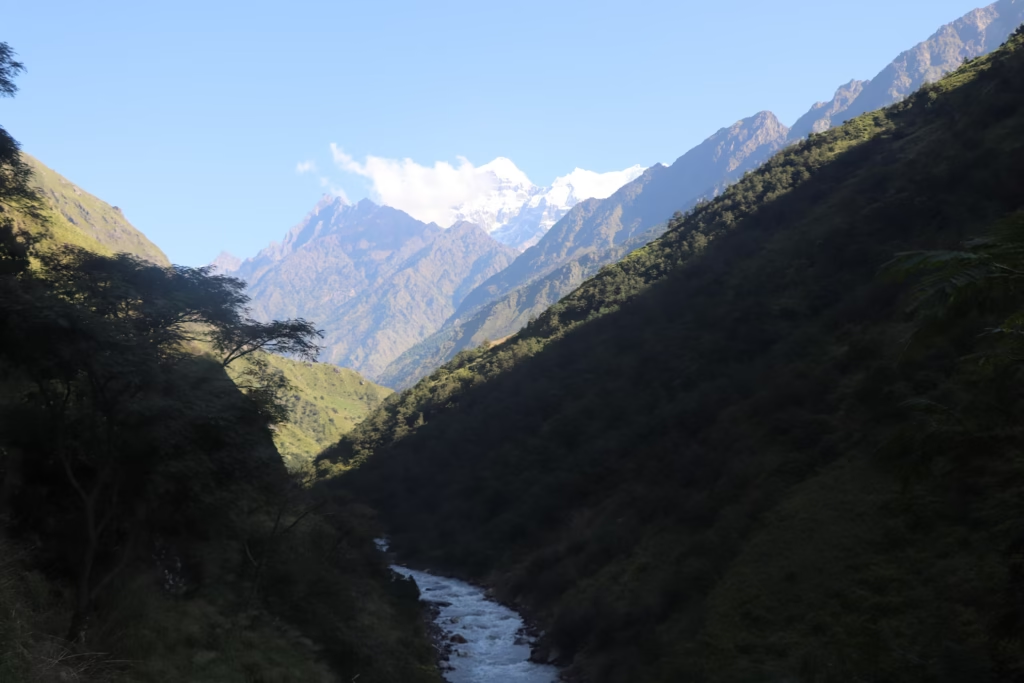
Day 9: Samdo to Larkya La Pass to Bimthang – The Hardest Day, The Most Beautiful Reward
We started before sunrise. It was freezing cold, stars still hanging above us like quiet witnesses. I wore every layer I had—two jackets, two pants, gloves, and a hat that kept slipping over my eyes. Our headlamps lit the frozen trail as we walked away from Dharamsala, the last tea stop before the pass. The path was silent, only the sound of our boots crunching on frost. Each breath was thin and sharp, like breathing through a straw. But we kept going, step by slow step, like a moving line of shadows under the rising sun.
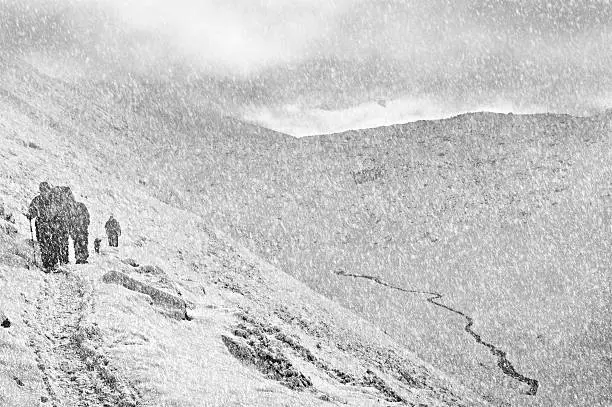
As the light grew, so did the mountains. They were everywhere—sharp, silver, and shining. We climbed higher and higher over rocky slopes and icy patches, each step feeling like a small battle. The altitude made my head heavy and legs weak, but my heart kept pushing me forward. Then, just after hours of climbing, we saw it: a small sign, half-buried in snow, marking Larkya La Pass—5,160 meters (16,929 ft). I dropped my bag and cried. Not loud tears, but quiet, shaking ones. The wind was wild up there, flags flapping like wings, and the view—oh, the view—was beyond anything I’ve ever seen. Mountains to the left, glaciers to the right, sky so wide it felt like the world was opening just for us.
Descent to Bimthang
The descent to Bimthang was long and brutal. My knees screamed with every step, and the trail seemed endless. But the scenery kept me going—wide open valleys, frozen lakes, and far-off peaks glowing gold in the afternoon sun. When we finally reached Bimthang, I dropped my bag, lay on the grass, and just stared at the sky. I had done it. I had crossed the highest point of the trek, the most difficult challenge, and I came out the other side stronger. If you ever doubt yourself—remember this: the mountain doesn’t care who you are. But if you show up with respect, patience, and heart, it will show you magic.
Day 10: Bimthang to Tilije – A Walk Through Light and Green
I woke up in Bimthang to sunlight pouring through my window and the sound of birds for the first time in days. After the freezing winds of Larkya La, the warm morning air felt like a soft blanket. My legs were still sore, but my heart was light—we were heading down now. The trail dropped fast through open alpine meadows, across little wooden bridges, and into deep green forests that smelled of pine and moss. I felt like I was walking back into life. Every step was easier, every breath fuller. It was like my body was thanking me for pushing through the hard parts.
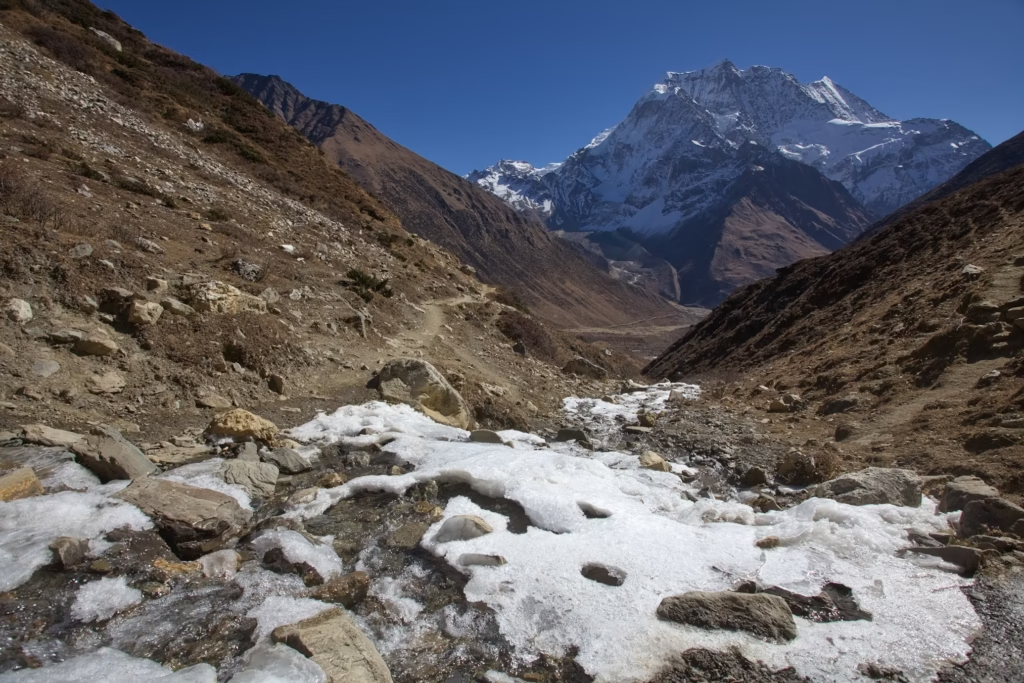
We passed through Karche and Gho, small villages where kids played in the fields and farmers were out turning soil. I saw apple trees and flowers again—things I hadn’t noticed in days. It made me smile in a quiet, grateful way. In Tilije, the village where we stopped for the night, the houses were cleaner, more modern, and the teahouse even had Wi-Fi. But honestly? I didn’t feel like turning my phone back on just yet. That night, I sat outside with a hot cup of milk tea, watching the last light fade behind the hills. The hardest part was behind me, and the end was near. And somehow, I already missed the silence of the high mountains.
Day 11: Tilije to Dharapani – The Final Stretch
This morning felt different. There was a strange mix of happiness and sadness in my chest. I was excited for a hot shower and a proper bed, but I also didn’t want this to end. We walked through forest paths, over swinging bridges, and alongside the Marsyangdi River, which now felt loud and playful compared to the stillness of the Budi Gandaki. The trail joined with the Annapurna Circuit route near Dharapani, and suddenly there were more trekkers, more signs, more noise. It felt like coming back to the world, but part of me wanted to turn around and walk back into the wild.
When we reached Dharapani, my guide smiled and shook my hand. “You did it,” he said. Just like that. And it hit me—I had done it. I had walked for almost two weeks through one of the most remote, beautiful regions of Nepal. I had crossed rivers, slept under stars, climbed a 5,000-meter pass, and seen mountains I’d only dreamed of. If you ever get the chance to walk the Manaslu Circuit, take it. Not just for the views, but for the way it changes you. The trail gives you space to think, to breathe, to feel small—and that, I think, is where the real beauty lies.

Conclusion
Now that I’m back in the noise of the world—with phone signals, traffic, and daily routines—the silence of the Manaslu Circuit still echoes in me. It wasn’t just a trek. It was a slow return to what matters. Every step away from comfort brought me closer to clarity. I didn’t just climb up a mountain—I climbed out of distraction, out of routine, out of everything I thought I needed. And somehow, I came down carrying less in my backpack and more in my heart.
Manaslu isn’t the most famous trek in Nepal, and maybe that’s its secret. It’s raw. It’s honest. It demands your attention and gives you awe in return. You walk through lands where the mountains still rule, where people still greet you with their hands pressed together, and where the air itself feels sacred. If you’re someone who wants more than just pretty photos—if you’re looking for something deeper, quieter, and real—then this trail is calling you.
I left footprints on those high trails, but they left something in me too—something I can’t quite name, but something I’ll never lose. And maybe, just maybe, that’s what trekking is all about.

